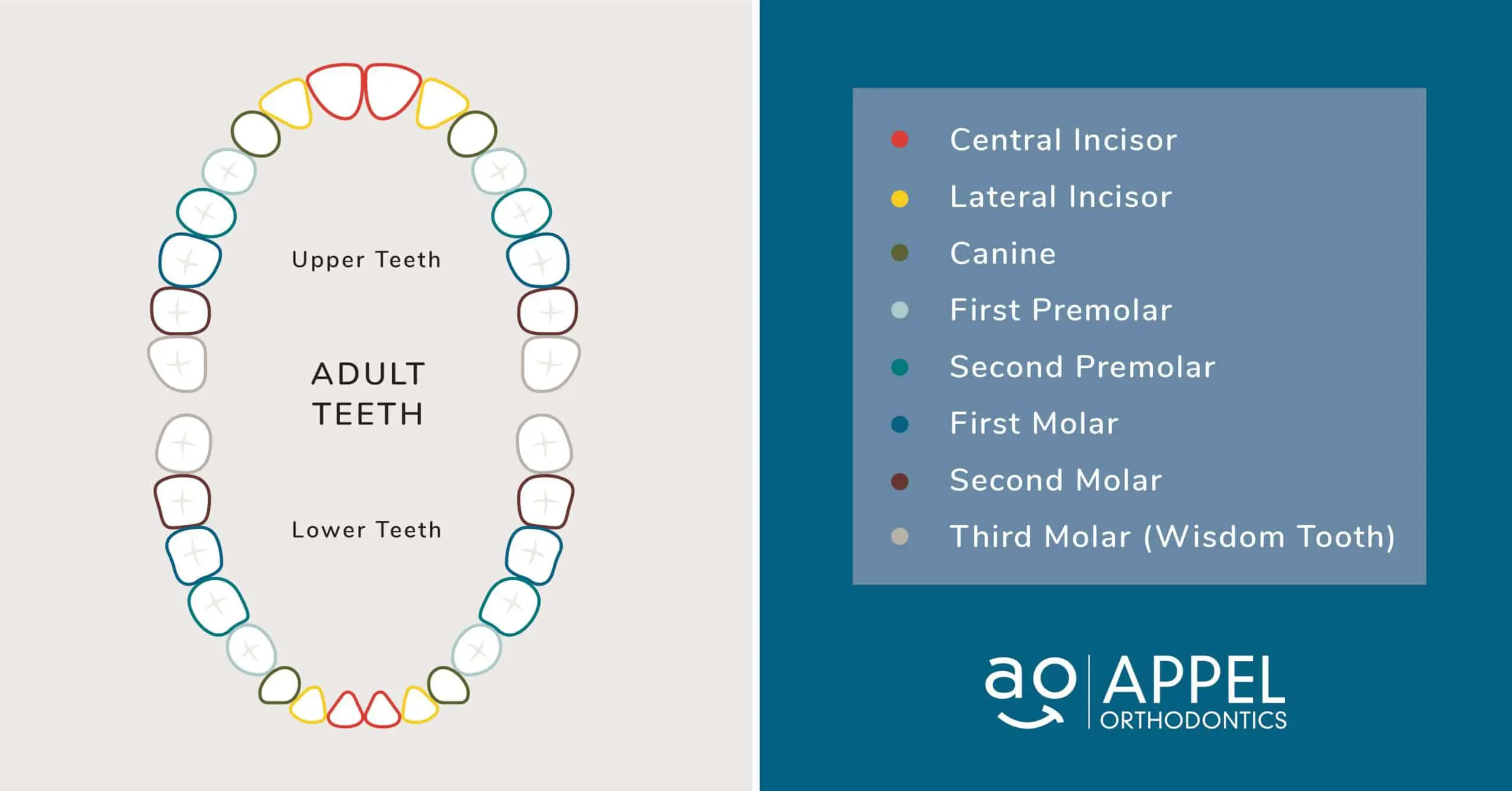If you’re missing a couple of teeth, you’re not alone. Missing teeth are more frequent than you think. The teeth that are most frequently missing are the wisdom teeth (third molars) in the back of your mouth, the second premolars in the middle of your mouth, and the lateral incisors in the front of your mouth. Of all teeth, the upper lateral incisors — those two teeth on either side of your two front teeth — are the most commonly missing teeth. Usually, the cause is simply due to genetics, where the trait has been passed down from one generation to the next. Whatever the cause, it can leave prominent gaps in your smile. The good news is, we can fix those gaps caused by your missing teeth!
Missing Lateral Incisors? Help Your Smile With Braces!


Why Am I Missing My Lateral Incisors?
The lateral incisors teeth sit on either side of your central or primary incisors, which is a fancy way of saying your two front teeth. They are smaller than your front teeth, but they are just as important to your bite. Not everyone has lateral incisors, and there are a few possible causes.
About 20% of the population is missing teeth, and lateral incisor teeth are some of the most common. Genetics is usually the cause for missing lateral incisor teeth. Often, if the parent has a missing lateral tooth, the child will also have a missing lateral incisor.
There are three classifications of missing teeth.
- Hypodontia: 1-6 teeth are missing;
- Oligodontia: 6 or more teeth are missing, minus the third molars (wisdom teeth);
- Anodontia: All of the teeth are missing.
What Are Treatment Options for Missing Lateral Incisors?
There are several treatment options for those missing lateral incisors. This can include space closure using braces or Invisalign, dental implants, and resin-bonded “winged” bridgework. Your doctor at Appel Orthodontics can determine which option is best for you both mechanically and aesthetically.
Canine Substitution
One of the most common forms of treatment is braces or Invisalign. You may think braces won’t work when teeth are missing, but that is not the case at all! We offer high-quality, American-made braces in metal, gold, or clear options. These braces can close the gaps on either side of your central incisors where the lateral incisors should be. So if you’re wondering whether you can wear braces with missing lateral incisors, the answer is YES.
Closing these gaps with braces is known as canine substitution. The braces move the canines close to the incisors to make up for the missing lateral teeth. This gives your smile a more uniform look. Braces can also widen the spaces where the lateral incisor teeth would be, so dental implants or bridgework could be inserted there.
Dental Implants
Another option is to use dental implants resembling the missing lateral incisors. This does involve some oral surgery to implant posts into your upper jaw so the new artificial teeth can be attached. The new teeth will look natural, and they will also keep the other teeth from shifting and creating spaces that could cause issues later.
Resin-Bonded Bridge
One of the best options for missing lateral incisors is the use of a wing lateral bridge. This device includes a crown that resembles the lateral tooth and a small “wing” of material bonded to the back of the central incisor to hold the new tooth in place.
The resin bonded bridge is called by many other names like winged lateral bridge, the Maryland Retained Bridge, and the Resin Retained Bridge. This method is popular because it gives a more natural look to the smile. Unlike the canine substitution, which moves the canines to the missing tooth location, the winged lateral bridge gives the look of the correct number of teeth across the front of your smile. The bridgework resembles the natural tooth, so it’s generally considered one of the most aesthetically pleasing options.

What Problems Can Missing Lateral Incisors Cause?
Like any abnormality with your bite, missing lateral incisors can increase tooth decay, gum disease, jaw pain, and issues with your overall health. Crooked lateral incisors can cause problems, but they can lead to more issues when they're missing.
Gum Disease
The space between the existing teeth exposes the gums to food particles that can get between the gums and teeth. This can lead to infections or inflammation of the gums, leading to tooth loss if not treated as soon as possible. The large exposed space can also make the gums vulnerable to bruising, tenderness, cuts, and tears from food, especially hard foods like tortilla chips or hard vegetables. This can be painful and also can cause inflammation of the gums. Your lower teeth can also hit the gums and cause pain.
Jaw Pain
The lack of lateral incisors can also cause jaw atrophy, which is a weakening of the bone where the tooth is missing. Having the teeth in place keeps the muscle and bone strong as you bite and chew. With the tooth gone, that area isn’t “exercised,” and the muscles and bone weaken. Over time, this can cause the other teeth to shift and move to fill the hole, and it can even lead to tooth loss as the bone around the nearby teeth weakens. A bad bite can also put excess pressure on the joints of your jaws, known as the temporomandibular joint. TMJ disorder can cause chronic pain and headaches over time.
Speech Difficulties
Missing teeth can affect your appearance and change the shape of the front of your face. They can also affect your speech, which depends on your tongue being positioned in certain ways against certain teeth. Your speech could be more slurred or difficult to understand with those teeth missing. You may develop a lisp because your tongue has nothing to move against to form certain sounds.
Digestive Issues
Finally, bite problems from the lack of lateral incisors can make biting and chewing more difficult. This can make it more difficult to digest your food because the breakdown of food isn’t done enough in the mouth, where digestion starts. This makes your stomach work harder and can lead to a decrease in nutrient absorption.
These are some of the reasons why it’s so important to repair your dental issues as soon as you can, including repairing or replacing your missing lateral incisors.
Taking Care of Your Missing Lateral Incisors
Which one is best for you with all of the options for repairing missing lateral incisors? In the Philadelphia area, you can schedule a free appointment with Appel Orthodontics. We will evaluate your dental issues and provide you with a comprehensive plan on how best to address them all. We will outline the best options for you that will improve your oral health and improve your smile aesthetically, which improves your self-esteem.
Missing lateral incisors create a less-than-perfect smile, but Appel Orthodontics has treatments available to restore and create the smile of your dreams!
The most common way to treat gaps in your smile is with braces, though in many cases, Invisalign can help. Appel Orthodontics can determine the best treatment method for your crooked or missing lateral incisors. It’s something you’ll want to treat because missing teeth can disrupt your bite and cause other dental and overall health issues down the road, from jaw pain to digestion problems.


